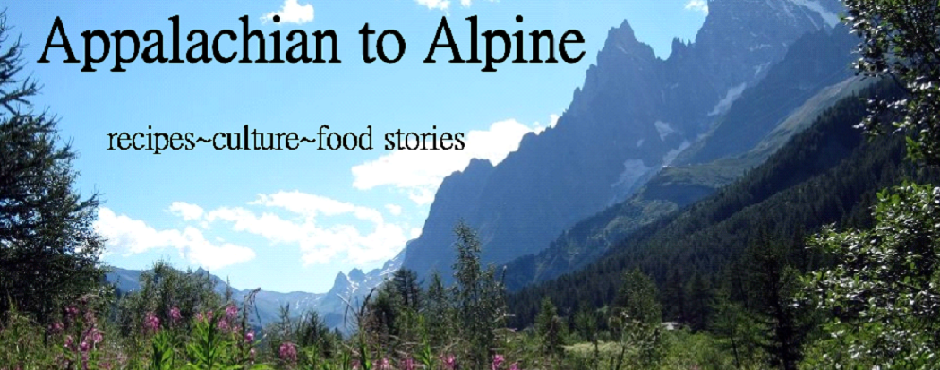Pasta e fagioli…. according to my very Italian husband Gianluca, ‘It is simple and tasty. I can tell you I’ve seen business men eating their pasta e fagioli in their suit and tie, just to tell you how good it is.’
Pasta e fagioli translates as ‘pasta and beans’. Sounds pretty boring, huh? Gianluca proved to me otherwise. On a whim, I planted borlotti beans in my garden this summer. They recently were ready to pick, and my husband declared that it was time to eat pasta e fagioli. I’ve heard Italians talking about this dish for years, but I had never encountered it. It is one of the very few dishes that is ubiquitous in all of Italy, and many refer to it as ‘Italy’s national dish’.
Oh. My. Goodness.
It is fabulous. Simple, wholesome, and delicious.
Tonight Gianluca walked me though his family’s method of cooking pasta e fagioli. As he said to me tonight when I asked him how he learned the recipe, ‘ I have expert in my family… there is Paolo! Paolo is the expert of squishing beans. It is typical of where we are from.’
So there you have it, and here is how it’s made. If you can find fresh borlotti beans, it is much much better. I honestly haven’t tried it with anything other than fresh beans, so try not-fresh-from-the-garden beans at your own risk! If you substitute in dried beans, you need to end up with about 2 cups cooked beans, with enough of the water they were cooked in to cover them. This will be a waste of ingredients if you use canned beans, most likely. Gianluca says to make sure that I explain that there are many different versions of this dish, and this is his take on it.
Ingredients:
2 cups fresh, shelled borlotti beans (can use other mild tasting beans. Some regions of Italy use white beans)
6 cups of water
1 1/2 cups dry pasta (spaghetti broken into 1.5 inch pieces, ditalini, or elbow macaroni)
1/2 onion
2-3 cloves garlic
2 carrots
2 sage leaves
2 tomatoes (or one giant one, like I did)
oil for the pan
salt, pepper, marjoram, red pepper flakes
Shell your borlotti beans, put them in a pot along with 1/2 tsp salt, and cover with your 6 cups or so of water. Boil them until tender… it should take about an hour, but all beans are different so watch them. If the water evaporates too much, you’ll want to add in some more. Later you will boil your pasta in with the beans and the water, so there needs to be enough to barely cover the pasta.
| Gianluca showing how a real man breaks spaghetti |
When the beans are done, take a slotted spoon and scoop a slotted-spoon’s worth of beans out of the pot, letting the liquid drain out. Put the beans in a bowl, and squish with a spoon.
| smashed beans |
Chop up your onion, mince the garlic and sage, cut the carrot into small cubes, and cut the tomato into cubes.
Heat up some oil in a pan, and saute the carrots, onion, and sage over medium flame. Add in a pinch of salt, some fresh ground pepper, and a pinch of marjoram. Saute until tender, add in the garlic, and cook for a minute. Add in your squished beans, and stir well. Now add in the tomato , and cook for about 30 seconds. Turn off the heat.
Bring your beans to a boil, and then add in your pasta. Gianluca breaks spaghetti up into 1.5-2 inch pieces. We used a great gluten-free spaghetti that is nearly indistinguishable from the real deal. Traditionally, ‘ditalini’ are used, but you can also use elbow macaroni. Cook for the amount of time your pasta needs to cook, and then when it is done, add in your sauteed veggie mixture and gently stir. Serve into shallow bowls, top with some nice extra virgin olive oil, red pepper flakes, and fresh ground black pepper. It is extra delicious sprinkled with some fleur de sel…. not traditional, but great nonetheless.
Enjoy! Traditionally, it is best with red wine but this version is good with a white wine, as well.


Fatal error: Uncaught Error: Call to undefined function ereg() in /home/logcabincooking/public_html/appalachiantoalpine.com/wp-content/themes/canvas/includes/theme-comments.php:63 Stack trace: #0 /home/logcabincooking/public_html/appalachiantoalpine.com/wp-content/themes/canvas/includes/theme-comments.php(19): the_commenter_link() #1 /home/logcabincooking/public_html/appalachiantoalpine.com/wp-includes/class-walker-comment.php(174): custom_comment(Object(WP_Comment), Array, 1) #2 /home/logcabincooking/public_html/appalachiantoalpine.com/wp-includes/class-wp-walker.php(145): Walker_Comment->start_el('', Object(WP_Comment), 1, Array) #3 /home/logcabincooking/public_html/appalachiantoalpine.com/wp-includes/class-walker-comment.php(135): Walker->display_element(Object(WP_Comment), Array, '5', 0, Array, '') #4 /home/logcabincooking/public_html/appalachiantoalpine.com/wp-includes/class-wp-walker.php(370): Walker_Comment->display_element(Object(WP_Comment), Array, '5', 0, Array, '') #5 /home/logcabincooking/public_html/appalachi in /home/logcabincooking/public_html/appalachiantoalpine.com/wp-content/themes/canvas/includes/theme-comments.php on line 63